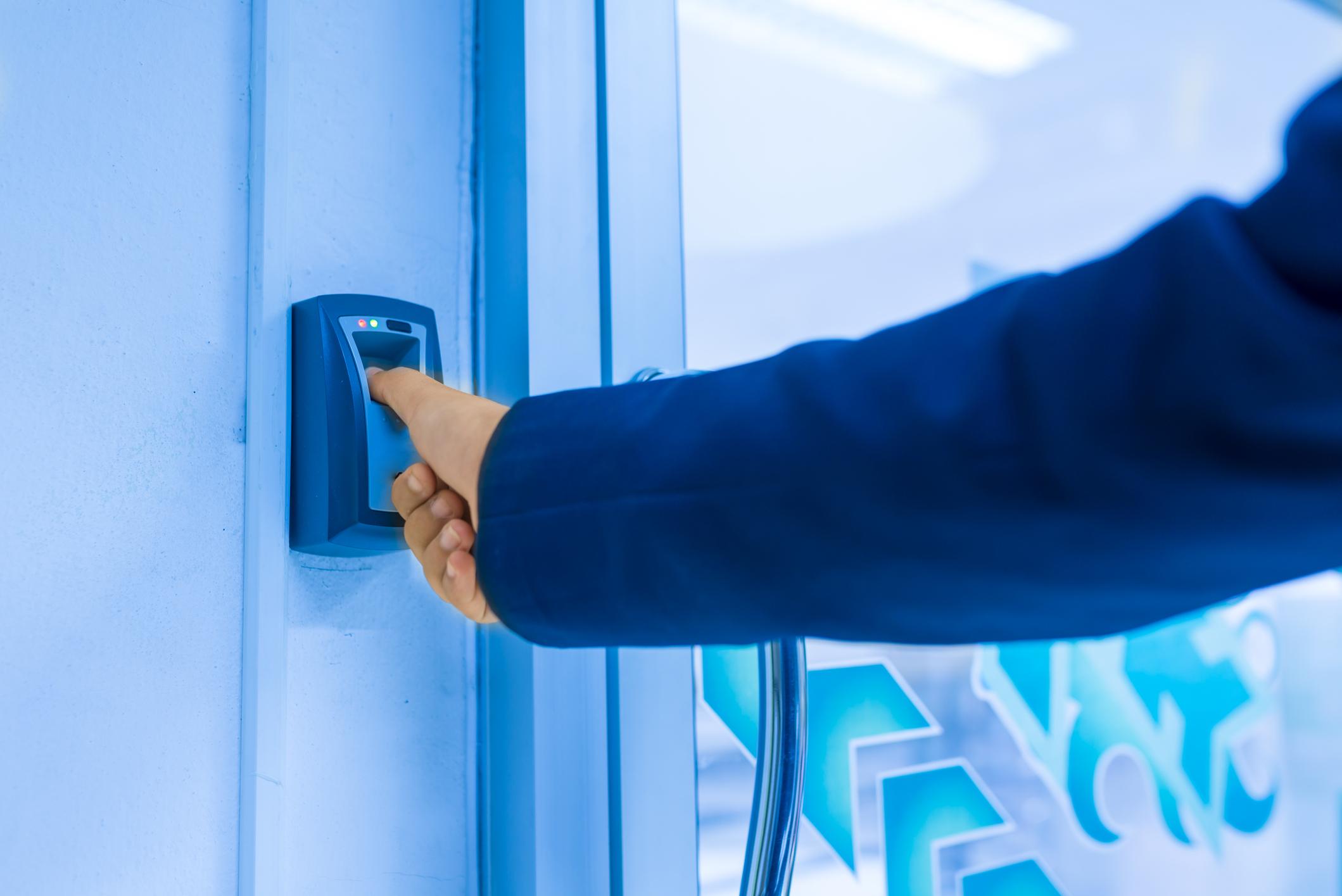
Business News Daily provides resources, advice and product reviews to drive business growth. Our mission is to equip business owners with the knowledge and confidence to make informed decisions. As part of that, we recommend products and services for their success.
We collaborate with business-to-business vendors, connecting them with potential buyers. In some cases, we earn commissions when sales are made through our referrals. These financial relationships support our content but do not dictate our recommendations. Our editorial team independently evaluates products based on thousands of hours of research. We are committed to providing trustworthy advice for businesses. Learn more about our full process and see who our partners are here.
When I Work Review

Table of Contents
- The customizable dashboard provides a snapshot of daily unfilled shifts.
- When I Work has a photo clock-in option to reduce time theft and buddy punching.
- Messaging tools simplify scheduling communications.
- When I Work doesn’t have live phone assistance or 24-hour support.
- Seats must be purchased in groups of five.

- When I Work is an all-in-one scheduling, time, and attendance platform for shift-based businesses.
- It has tools to reduce time theft and buddy punching, including a photo clock-in option.
- Standard scheduling features start at $2.50 per employee, per month, but there’s an additional fee for time and attendance.
- This review is for business owners and managers considering When I Work as their time and attendance system.
Managing schedules, shift trades and payroll is time-consuming for restaurant and retail store owners and managers. The top time and attendance systems automate scheduling processes and streamline payroll. When I Work is our choice for restaurant and retail businesses with shift workers. It has comprehensive scheduling tools, a time clock, and plenty of additional features, such as photo clock-ins, multiple pay rates, payroll integrations, and labor reports.
The cloud-based software works on any internet-connected device, including employee phones and shared terminals. Built-in communication tools connect workers and managers while shift coverage features help teams fill open slots.
When I Work Editor's Rating:
9.6 / 10
- Pricing
- 9.9/10
- Features
- 9.9/10
- Integrations
- 9.4/10
- Usability
- 9.5/10
- Customer Service
- 9.4/10
Why When I Work Is Best for Restaurants and Retail
When I Work’s drag-and-drop functionality, shift templates and auto-assign scheduling features help restaurant and retail store leaders fill open slots quickly. Custom dashboards display critical metrics, ideal for managing labor costs in real time. The time and attendance mobile app lets managers handle time-off requests, last-minute schedule changes and side work assignments from their smartphones, all key features we looked for in the best time and attendance software for restaurants and retail businesses.

See a preview of today’s schedule from the manager’s dashboard or customize your view to display attendance notices and labor costs. Source: When I Work
On the employee side, workers can log in using their personal devices (with optional GPS enforcement) or at a shared terminal (with optional photo verification). Staff can view schedules, find someone to cover their shift and request time off through the mobile app. Workers can also bid on open shifts and communicate with co-workers without searching for contact information.
Tip: Use When I Work’s overlapping OpenShift coverage option to reduce labor costs and fill more shifts.
Usability
We found When I Work easy to implement and navigate. While it lacks a free version like Clockify offers, the 14-day free trial provides full functionality, allowing users to streamline scheduling processes immediately. Click the top tabs for the Dashboard, Scheduler, Attendance and WorkChat features. If you need help, When I Work’s in-app guides and live support assist with troubleshooting.
For retail and restaurant employees, When I Work’s mobile app works on iOS and Android devices. Users can receive push notifications and text messages. Staff can also chat within the application, submit time-off requests and pick up shifts.

Employees can swap shifts using their iOS or Android device. Source: When I Work
When ready to integrate third-party tools, head to the integration tab, select your software and click enable. When I Work connects with fewer third-party tools than we found in our TimeClock Plus review or Clockify review. However, When I Work does have several integrations with some of the best payroll service providers like Gusto and ADP. It also works with the point-of-sale system Square and has prebuilt Zapier connections for project management tools.
When I Work Features
When I Work has features that let you and your team managers seamlessly schedule employees, track time and attendance, monitor employees’ locations and manage paid time off and leave requests. Here are some of the features When I Work offers that we found most useful:
| Employee Scheduling | Build, adjust and view schedules from desktop or mobile devices and instantly inform staff of changes. |
|---|---|
| Time Reporting | Apply multiple pay rates, automate clock-in/out reminders and control where, how and when employees log in. |
| Time-Off Management | Streamline your time-off request process with mobile app tools for managers and employees. |
| Communication | Send company-wide or group messages and chat with staff one-on-one texts using When I Work’s in-app communication tools. |
| Time & Labor Reports | View real-time and historical data about employees, shifts and positions to improve scheduling, budgeting and hiring decisions. |
Employee Scheduling
When I Work’s scheduling tools let managers create employee schedules for different locations and positions, either from scratch, with a template or with the one-click auto-scheduler. Only a few competitors have built-in scheduling tools, of which only TimeClock Plus offers an auto-scheduler like When I Work. The auto-assign feature uses artificial intelligence to appoint shifts. It accounts for employee positions, time-off requests, preferred shifts and the maximum hours available per worker.

Ensure weekend coverage by clicking the “schedule weekend shifts first” on the auto-assign options tab. Source: When I Work
When I Work sends notifications to employees when managers post schedules, and workers can view them in the mobile app. It provides additional flexibility for restaurant and retail staff through its OpenShifts and swap or drop tools. Employees can trade shifts, pick up open ones or find a co-worker to cover a shift.
Time Reporting
This feature is important to all time and attendance software, and similar to other products, When I Work offers a time clock for individual and shared devices. Restaurant and retail shop owners can establish a time clock terminal using a dedicated computer, smartphone or tablet. Alternatively, they can allow workers to punch in and out from their devices. In both cases, the time clocks track paid and unpaid breaks, late clock-ins and absenteeism.
Employees can add notes to their timesheets, and supervisors can adjust time entries for staff. When I Work also offers tools to reduce time theft and buddy punching, such as someone clocking in for someone else. We found the photo clock-in/out feature useful for busy store owners and managers, and it’s a capability not offered by all time-tracking systems.

Staff can add notes when clocking in or out. Source: When I Work
Multilocation businesses can automatically attach site location maps to schedules so employees know exactly where they need to work. This feature is rare among When I Work’s competitors, and it benefits businesses that share staff across several sites.
Time Off Management
Time and attendance software typically offers leave management features. However, we were impressed with how easy it was to create simple time-off policies, such as requiring advanced notice. You can block specific dates, ensuring full staff availability for big shopping days or large dinner reservations. The mobile request-off feature can also be disabled. Leave management tools cover unpaid or paid holidays and personal days. It lets managers create custom time-off types, such as jury duty or bereavement.

Adjust general request-off settings to reflect your company’s policies. Source: When I Work
When I Work offers employees a snapshot of their requests and yearly totals, and managers can review submissions and approve or deny them from their mobile phones or computers. As with other When I Work data, time-off information appears in reports and timesheets. You can export time and attendance data to third-party tools like ADP, Gusto and Paychex if you enable payroll integrations.
Communication
Several time and attendance tools offer in-app communication, allowing managers and employees to message without divulging personal phone numbers. The WorkChat feature lets managers quickly alert the entire workforce of business closures or new promotions. They can also create channels for different shifts or job positions. Since WorkChat supports photos, it is possible to show staff an issue, even if they won’t be back to work for a few days.
Everyone can customize how they receive notifications. The default setting is the banner style alert, which shows across a device’s screen, even if the user doesn’t have the When I Work application open. Other options include popup messages, app icon badges and in-app notifications.

Blast a message to your whole team or chat one-on-one with employees using WorkChat. Source: When I Work
Time and labor reports
Several time and attendance platforms provide customizable dashboards and reporting tools. When I Work’s dashboard highlights essential information like today’s schedule, attendance notices and labor costs. We like the color-coded graphs with options for viewing shift coverage and labor costs by position, schedule or job site. The pay period forecast tool is especially helpful for scheduling and hiring decisions.

Understand how scheduled vs. worked hours compare and use your insights to forecast future needs and costs. Source: When I Work
When I Work’s reporting page displays all available reports and exports. We especially liked that predefined reports like the labor breakdown or attendance statements are auto-generated daily. Managers can also create custom reports using drag-and-drop tools. Reporting tools help identify employee behavioral trends or problems with unfilled shifts.
When I Work Cost
When I Work offers two service plans and is the least expensive software for retailers and restaurant owners looking for basic scheduling functionality. However, time and attendance tools are an add-on, bringing the total cost up to $4 per user, per month, which is in line with similar systems from PurelyHR and OnTheClock. When I Work requires you to purchase seats (users) in increments of five, so you will pay for 10 seats if you have eight employees.
Standard subscriptions are a good fit for most small retail and restaurant businesses. This plan includes auto-scheduling, messaging and labor planning tools. Owners with multiple locations that want labor-sharing options, custom shift reports and additional security features should choose the Advanced package.
When I Work offers a 5% discount for annual prepayment, and this option locks you into a set number of seats. You can add seats to a yearly plan but can’t remove them. If your business maintains roughly the same number of staff throughout the year, this isn’t a problem. But if your workforce changes substantially during peak and off seasons, monthly billing is a better choice.
Here’s how the two plans compare:
- Standard: The Standard plan costs $2.50 per user per month for monthly billing or $2.38 with annual prepayment. Time and attendance features increase the price to $4 or $3.80. All standard scheduling features come with this version, including auto-scheduling, labor planning and shift coverage.
- Advanced: The Advanced subscription is $6 per user, per month, for monthly billing or $5.70 with annual prepayment. Time and attendance tools increase the cost to $8 or $7.60. This plan adds advanced rules, role permissions, application programming interfaces and custom attendance reports.
Did you know? The Time and Attendance add-on feature includes on-demand pay through Clair. Using Clair doesn’t alter your payroll process or have an additional fee.
When I Work Setup
Start with a 14-day free trial of either plan by entering your name and email address. When I Work requests your phone number, company name, industry and estimated number of employees. Once you create a password, your account is accessible. No credit card is required.
When I Work has a guided setup process that walks you through scheduling configurations, including selecting positions and adding users via email. Alternatively, you can bulk-import staff by uploading a Microsoft Excel or comma-separated values (CSV) file.
Each tab (Dashboard, Scheduler, Attendance and WorkChat) requires additional configuration. For instance, you can set up your pay periods and time clock options under Attendance. Most settings are customizable, allowing you to choose who can broadcast messages and which type of time-off requests are available. The Scheduler lets you create custom job positions or select prenamed roles.
If you want to continue using the software after your trial ends, navigate to the Account & Billing page in the app. You can choose the Standard or Advanced plan, toggle the time and attendance features on or off and add seats in increments of five. We like how easily users can scale or change their plans anytime.
When I Work Customer Service
When I Work has training videos, live webinars and a searchable knowledge base. It also provides product news, outlining updates and improvements. Suppose your team needs additional assistance. In that case, When I Work has easy-to-follow documentation — complete with screenshots — for setting up your account, scheduling, hiring and using the time clock in the app or a browser.
However, unlike Clockify, When I Work doesn’t offer 24/7 support or a toll-free number. Instead, users must log into their account to chat online or submit a ticket. On weekdays, live chat is available from 7 a.m. to 7 p.m. Central time, and agents work on help tickets between 7 a.m. and 10 p.m. CT. You can submit tickets or chat on weekends between 9 a.m. and 4:30 p.m. CT and on holidays from 8 a.m. to 5 p.m. CT.
When I Work Drawbacks
When I Work focuses on shift-based workplaces but doesn’t offer advanced features required for larger organizations with project-based teams. A solution like Time Doctor or Clockify provides more tools for monitoring productivity and billable hours.
Although When I Work supports GPS-enabled logins, it can’t track employee location throughout the shift. If your business wants to monitor delivery drivers or field teams, check out our full review of QuickBooks Time. With QuickBooks Time, managers can view employee locations on a map and quickly deploy them to a nearby customer site.
Methodology
During our weeks of research, we identified the top time and attendance solutions. We considered features, pricing, usability, integrations and customer support when developing use cases. In addition, we tested each platform using free trials and demos. We looked for restaurant and retail tools that streamlined employee scheduling, shift swaps and time reporting.
FAQs
Overall Value
We recommend When I Work for …
- Organizations with 1,000 or fewer hourly, salaried and shift workers.
- Businesses in the restaurant, retail and hospitality industries.
- Companies with multiple locations that share staff between sites.
We don’t recommend When I Work for …
- Businesses that need 24/7 phone customer support.
- Employers that want project-based tools, like mileage tracking and billable hours.
- Businesses with needs for advanced GPS or geolocation features.






